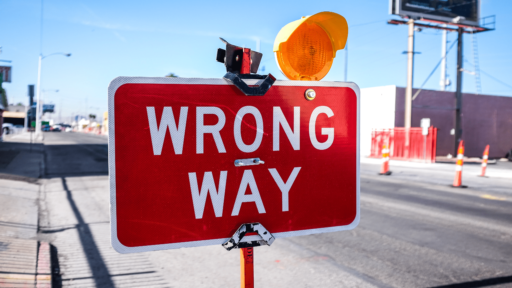We, humans, are a tribal species. We’re social by nature.
A sense of ‘belonging’ and gathering in familiar groups is in our DNA.
Because of this, it’s no surprise that the internet (one of the most defining phenomena of present times) has spawned ‘social media platforms’.
Mark Zuckerberg started Facebook to “connect people at colleges and a few schools”. What resulted in a billion-dollar business merely highlights the drive of human connection.
Since then, the platforms have evolved, and social media is now largely used by brands and marketers.
Organic reach is massively in decline, and many users have to rely on paid advertising to get their content seen.
In the meantime, it’s clear – if you don’t want to spend any money, you’ll need to spend some considerable time instead.
Now, this isn’t an in-depth blog post for social media management teams in need of drastic results (although you could see some). We also didn’t want to repeat the same strategy you’ll read in most guides.
It’s just our insight and a few select tips.
So, if you’re trying to get better at engaging with others on social media or are looking to increase engagement on your content (both are intrinsically linked) – keep reading.

Source: GIPHY
Table of Contents
What Is Social Media Engagement?
Why Should You Engage on Social Media?
Ensure You Have a Varied Social Media Engagement Strategy
Giveaways Can Destroy Authentic Social Media Engagement
Adjust Your Social Media Engagement Strategy for Each Platform
Use Social Media Engagement Tools
What Is Social Media Engagement?
In literal terms, ‘engagement’ on social media posts is measured by the amount of ‘engaging’ you and others do. Depending on the platform, this could be retweets, comments, likes or views.
When 80% of social media marketers say that their top strategy is to increase engagement across all channels, you know it’s important.
Here are some of the most common forms of engagement on the four most significant platforms:
| Likes, reactions, comments, shares, check-ins, tags | |
| Likes, retweets, replies, tags, mentions, followers | |
| Comments, shares, likes, saves, followers, mentions, views | |
| Likes, reactions, clicks, followers, impressions |
In social media marketing, it’s important to distinguish those that quantify true engagement from ‘vanity metrics’. Vanity metrics are high numbers that look good on paper but don’t provide value in marketing campaigns.
These can be things like:
- Pageviews
- Facebook fans
- Twitter followers
- Impressions
- Open rates
For business owners, what appears to be high engagement doesn’t necessarily translate to increased sales. What it can do, however, is to indicate the level of investment from your followers.

Source: Hello Social
It’s also an easy way to work out the types of content marketing that resonates with your target audience. The types of social media content with a high engagement rate should be regulars in your marketing strategy.
Gaining consistently high engagement (and engaging yourself) can increase brand awareness and send you on your way to the land of thought leaders and influencers.
On the other hand, ‘engagement’ constitutes your level of communication on various platforms.
By liking, sharing, commenting and messaging on any social media network, you are engaging with those that posted the content.
As you’ll find out, the two are closely connected.
Why Should You Engage on Social Media?
As Buffer put it,
“People don’t use social networks for a one-way experience. They’re seeking connections — with people and with brands.”
There’s a synergy in engaging and increasing engagement. You can’t have one without the other.
By trying to improve one, you’ll end up unwittingly improving the other.

But engaging on social media isn’t just for digital marketing or SEO.
You can improve yours to:
- Begin and build relationships with other users
- Converse with potential customers
- Question your favourite brands
- Discover new content
- Ensure you’re always learning from the expertise of others
If you’re engaging for the above reasons, it’s smooth sailing.
If you’re trying to increase your engagement metrics for business reasons, there’s a long road ahead.
For example, did you know that the average engagement rate for all types of Instagram posts is only 0.96%? Talk about a tough crowd!
However, if you can master it, it’s worth it. The more engaged your prospects, the more likely they are to spread the word about you.
Ensure You Have a Varied Social Media Engagement Strategy
While many marketing strategies advise focusing on one element at a time, we’re encouraging the opposite.
In a nutshell, increase your level of activity on every social network (where you are active) by any medium they offer.
By getting better at interacting with other users and their content, you will tend to find that you have more genuine interaction when you post something.

Source: GIPHY
When was the last time you struck up a conversation with someone who ‘liked’ your tweet or shared your status on their Facebook page?
We can all be guilty of laziness with our social media efforts, but it’s an easy fix.
If you’re an introvert, the thought of this can be a little scary, but you’ll quickly realise how fun it can be.
To succeed on social media, you have to get involved in the community. Luckily, there are plenty of ways to easily do this:
- Use hashtags to join trending conversations
- Join groups with other social media users
- Take part in Q&As
- Share other people’s content (this is content curation)
- Respond to all tags/mentions/comments
- Add personality to posts with gifs, emojis and other visual content (such as infographics/live video/webinars etc.)
- Post often with conversation-starters and questions
Here’s an example of engaging tweets done right:

Source: Twitter
For years, Leadership Girl struggled with engagement on her Facebook Group:
“I would post these super well-thought out posts…Why weren’t these people engaging?? Like seriously. Why wouldn’t they respond to anything I wrote?
What I quickly learned is that they do respond, but you have to draw them out of their shells.”
If this sounds familiar, check out the one question (and 100 examples compiled since then) that changed things!
Here are a few examples from the list:
- What is your favourite restaurant?
- How many hours of sleep did you get last night?
- What did you study in college, and what do you do now?
- What is your favourite way to keep healthy?
- Which one decision in your life would you go back and change?
Why not try a few and see how you get on?
Giveaways Can Destroy Authentic Social Media Engagement
There is no ‘quick-fix’ for social media engagement, something that Claire Fogel found out the hard way.
She confessed on one of her Instagram stories about a giveaway she had taken part in that, ultimately, “compromised the authentic engagement she’d worked so hard to build and maintain”.
After following in the footsteps of some of her favourite influencers, Claire entered what she thought was a legit paid giveaway to gain new targeted followers.

Source: TRIBE
However, things didn’t work out as planned, and those that followed her (far from her usual demographics) quickly unfollowed after the giveaway ended. This left her with nearly all ghost/bot social media accounts made purely for entering contests.
In the end, she’d paid for a bunch of fake followers.
After months spent removing profiles and her ban being lifted, she managed to get back on track with authentic engagement.
Obviously, this is an extreme example of what can happen, but Claire’s advice is to:
“Rethink your content and engage organically, because that’s what having a social platform is all about. Be authentic, be true to yourself, and I’m certain it will get better.”
The Power of Being Genuine
Authentic engagement is achieved when you make a sincere, genuine connection with someone on social media. It’s all about what you can give rather than take.
This authenticity should manifest in everything you create and share (don’t stick to boring templates).
Here’s how to keep it real:
- Be honest and don’t fake it
- Stop and think before you post anything
- Posts shouldn’t be too ‘manufactured’
- Say what you feel; not what you think people want to hear
- Don’t copy the competition
Whether for business or pleasure, remember not to let your engagement levels on social media dictate your self-worth.
If you’re engaging on social media for fun, remember you’re not posting to get people’s approval.
Stick to what you know best – being you.
Adjust Your Social Media Engagement Strategy for Each Platform
From eCommerce to keeping in touch with family, everyone uses social networks for different reasons.
If you think about the difference in the demographics using each platform, it makes sense that you’d engage in different ways.
You wouldn’t speak to your Grandma the same way you talk to your friends…unless your Grandma is Betty White.

Source: GIPHY
The Difference in Demographics
As stated in this Business News Daily article:
“According to Pew, 62% of internet users ages 65 and older use Facebook, and 72% of 50- to 64-year-olds use it. Facebook has the highest number of users in these age ranges.”
In a recent study, users in their teens accounted for 25% of TikTok’s active user accounts in the United States.
In the UK, the largest share of Instagram users are individuals aged between 25 to 34 years old, making up 30.9% of the user-base.

Source: Statista
Depending on your niche (and to increase your click-throughs) you need to know where your target audience is and how to draw them out of their shells.
AddThis suggests that you:
- Identify your audience (depending on your niche)
- Understand the type of content that makes them engage
- Create more of this content
- Measure, optimise, then repeat
On top of age-group specifics, you also need to narrow down the best time to access your network.
To make this process even more confusing, there is so much conflicting, ever-changing advice out there on the optimum times to post per platform.
To simplify this for you, we’ve chosen one (extremely trustworthy) source.
In a nutshell, after analysing over 30,000 social media posts, Hootsuite believes that early morning weekdays are your best bet for higher engagement on social media in general.
“The best time to post on social media overall is 10:00 AM on Tuesdays, Wednesdays, and Thursdays.”
We’d recommend trying this as a starting point (along with some other test times) and then adjusting your strategy when you see results.
Remember, it’s going to be an uphill battle, so don’t give up too soon.

Source: GIPHY
Aim for the Algorithm
Once you’ve done the above, you need to learn how each platform’s algorithm differs and how this affects engagement.
These algorithms are constantly changing and are one of the most significant sticking points of engagement.
For example, Instagram’s feed used to be purely chronological. You would see the posts of those you followed in the order they were posted.
Unfortunately, this is no longer the case (especially when paid ads came into play), so below is the most up-to-date information.
Facebook prioritises:
- Content from friends and family rather than brands
- Content from those you engage with (via comments, likes or messages)
- Based on the number and length of comments
- Based on the number of reactions and variety of those reactions
Instagram is believed to treat brand and consumers’ content equally and prioritises:
- Posts with the highest amount of likes
- Very recent posts (created within minutes of a user logging in)
- Posts from profiles that you typically engage with and hashtags that you follow
LinkedIn prioritises personal and business profiles equally, including:
- Content from those you usually engage with or who post consistently
- Users content that gets large amounts of engagement (even if you don’t engage yourself)
- Lengthy comments over a high number of reactions
Twitter prioritises:
- Recent content (last 24 hours) with the highest amount of engagement from users you follow
- Content posted in real-time (within minutes)
- Content with retweets and comments over likes

As you can see, each platform has its own rules that will affect the level of engagement your content receives.
If you’re trying to have real-time conversations with other users, be aware that each niche/timezone will slightly differ. With repetition, you’ll find your sweet spot.
With roughly 500 million tweets sent per day and over 1,000 photos uploaded on Instagram every second, it’s no wonder that little engagement is standard.
We didn’t say this was going to be easy…
Use Social Media Engagement Tools
What can make things easier, however, is the use of some handy tools.
Automating some processes can be a real game-changer (without forfeiting any authenticity), especially if you’re working alone.
By adding tools into your strategy, you can save a ton of valuable time that can be better used elsewhere. Remember, we want to work smarter, not harder.
If you want to engage more effectively, social media posts should be visual, genuine and consistent.
To help you with this, here are a few of our favourites:
- Creating visual content – Canva or Visme are two of the most popular.
- Fast, simple video edits – iPhone Clips or desktop tool Kapwing (handy for adding subtitles).
- Instant gifs for any keyword – the powerhouse that is GIPHY.
- Scheduling a steady stream of content – socialchief is our go-to!
- Analyse engagement levels – social listening tools like Mention or all-rounders like Sprout Social.
Most of these are free, so there are no excuses for not testing them out.

Source: GIPHY
Conclusion
Hopefully, this blog has given you some insight into the cycle of social media engagement.
To boost engagement when you share content, you need to increase your social media presence in general.
The internet may seem faceless at times but remember; there are real people behind those accounts you are interacting with.
To upgrade your strategy, it pays to:
- Consistently interact
- Keep it genuine
- Vary your tactics
- Optimise with tools
Let’s put the ‘social’ back into networking. When we all get involved, everyone wins.
Do you have any go-to methods for increasing engagement on your social media channels?
We’d love to hear at least one top tip in the comments!





